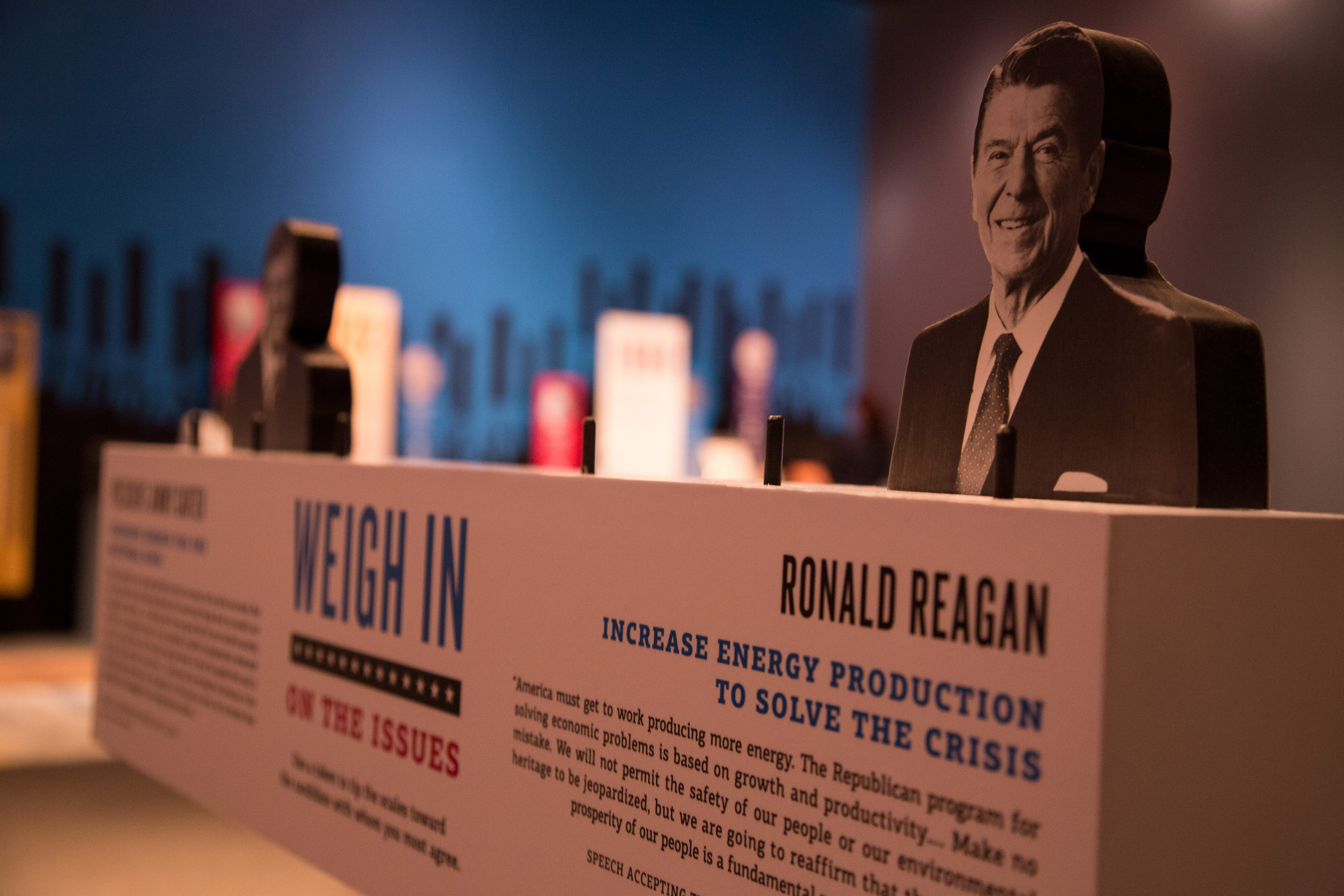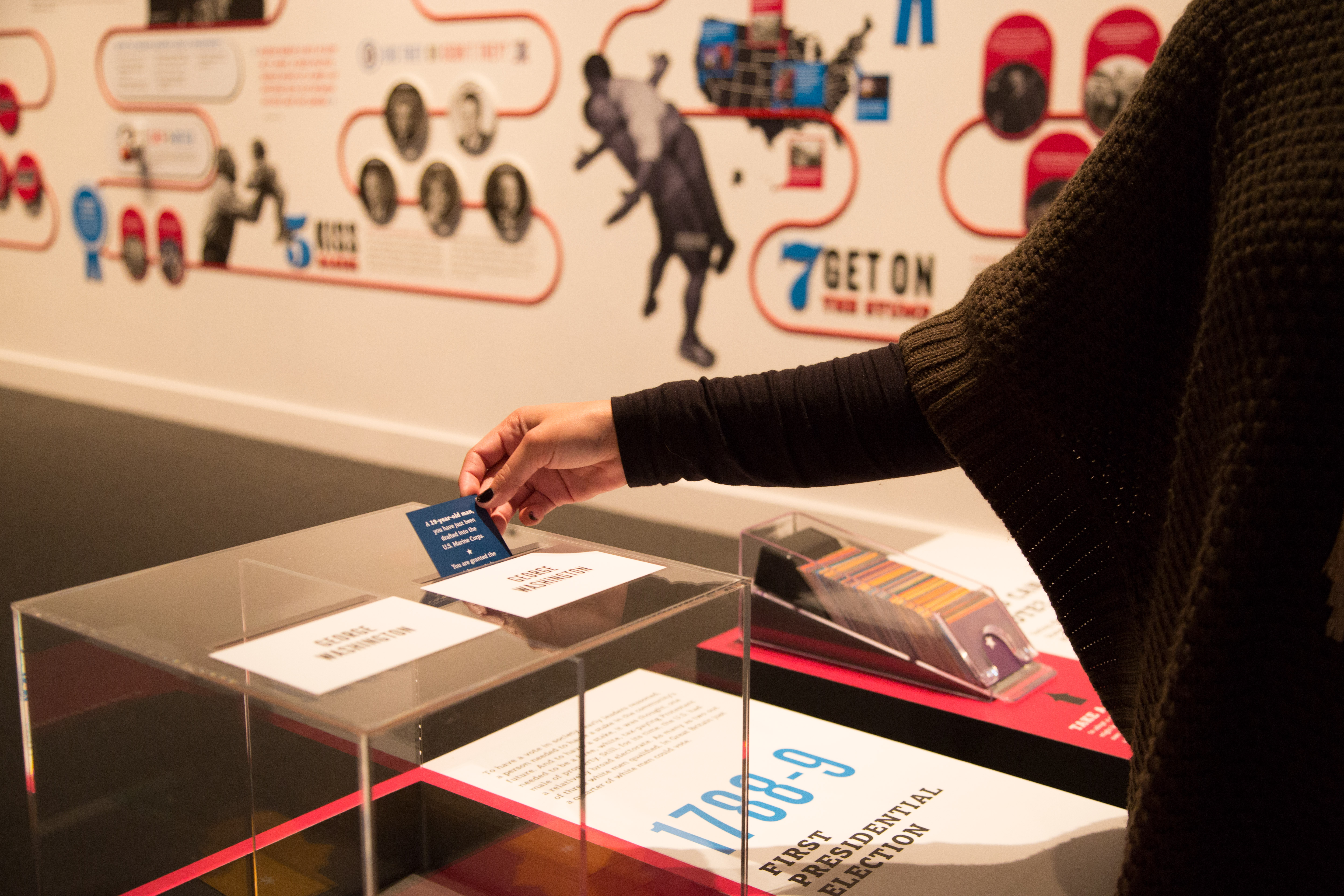Nearly any American citizen can run for president. But no matter a candidate’s background or odds, each contender must campaign.
Step into the candidates’ shoes during this special exhibit on the history of campaigns and elections in the United States. Relive landmark elections of the past, learn how technological and cultural advances are changing the way we choose our leaders, and get a glimpse of life on the campaign trail.
Hitting the Trail
Presidential candidates must deliver rousing stump speeches, take part in local pastimes and traditions, shake hands, kiss babies, and ultimately communicate and connect with the voters, on their road to the White House. Try your hand at some of these campaign mainstays in this interactive exhibit.
Pose for Your Campaign Poster
After seeing iconic posters from past presidential campaigns, choose a slogan and say “cheese” as you create your own.
Deliver Your Acceptance Speech

A candidate’s acceptance speech is a fresh opportunity to energize the party faithful and woo undecided voters. Test your skills by delivering a portion of a historic acceptance speech from the teleprompter.
Practice Your Handshake
Candidates have to master—and repeat thousands of times a day—the handshake, a deceptively simple interaction that speaks volumes. Learn a few of the tricks help candidates stay glad while glad-handing and test your strength at the “grip-o-meter.”
Tackling the Issues

Campaigns do more than propose a president. With each race, new ideas are floated, challenged and confirmed. Campaigns tell us what is on the Nation’s mind and what is most important to Americans, from victory in war to prosperity in peace. They show us what the Nation strives to be.
Build Your Platform
Platforms are the manifestos of political parties. In a unified voice, platforms articulate a party’s goals, tasks and aspirations. During your visit, review parties’ statements on a number of key campaign issues. Choose the ones that most closely reflect your opinion, and discover which parties most closely align with your selections.
Expanding the Electorate
Voting allows the diversity of the United States to speak with a unified voice. But diverse voices have not always been represented in the political conversation.
During your visit, take a ballot to adopt a new identity—one that might be quite different from your own—and cast your vote for president in a historic election, but only after your adopted race, gender, and age group have been given the right to vote.

Exhibition generously sponsored by
John and Nita Ford
Al and Connie Herbert

